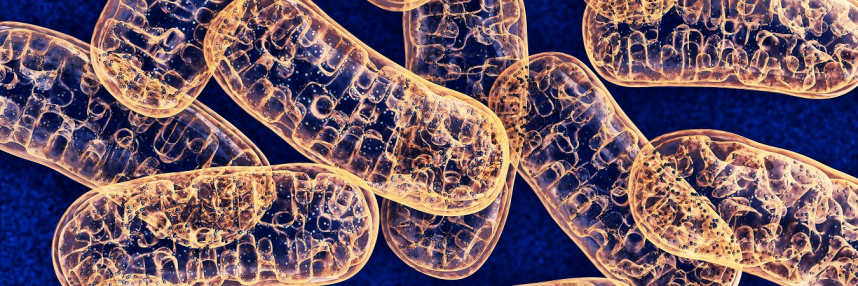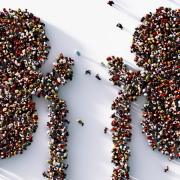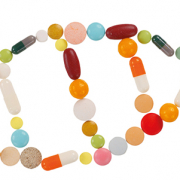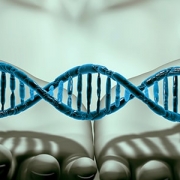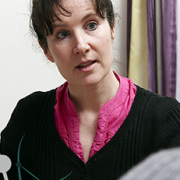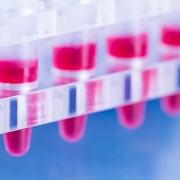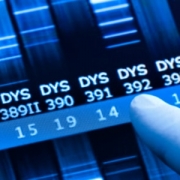All about mitochondria: Definition and disease
In the first of two blog posts about mitochondria, we explore what they are and how they can cause health conditions
Recently, mitochondria have been in the headlines. Many outlets have covered the birth of the UK’s first “three-parent baby”, conceived using an embryo created using mitochondrial donation treatment. This follows in the footsteps of 2016’s world-first three-parent baby, which we previously reported on in this blog. In the first article of this two-part series, we’ll take a closer look at what mitochondria are, and what happens when they don’t work as they should.
What are mitochondria?
Mitochondria are organelles – tiny structures in the cell that do specific jobs. Such is their importance, they are found in almost all human cell types, and in all multicellular life forms on Earth.
Sometimes called the ‘batteries’ or the ‘powerhouse’ of the cell, mitochondria host the chemical reactions that generate energy to power cellular functions. Most cells have hundreds of mitochondria, but the exact amount is dependent on the cell type – some, like muscle cells, require more energy and so have more mitochondria.
The mitochondrial genome
The mitochondrial genome is a single, circular chromosome containing just 37 genes – a small percentage of the tens of thousands of genes in the human genome. It is completely separate from the rest of the cell’s genome, which is contained within the nucleus. These 37 genes all have a role to play in the organelle’s function, and they work in concert with many other genes found in the nuclear DNA.
Mitochondrial function is affected by the genes in the mitochondrial genome, as well as variants in over 230 different genes in the nuclear genome. For example, mitochondrial DNA depletion syndrome can be caused by changes in one of eight different nuclear genes responsible for the replication of mitochondrial DNA and its maintenance. When caused by variants in the nuclear genome, these follow the rules of Mendelian inheritance and are often encountered as a recessive allele.
Unlike the nuclear genome – half of which is inherited from each parent – mitochondria and their genome are (except in rare cases) inherited solely from the mother. The father’s sperm also contains mitochondria to power their swimming, but this is a small number compared to those found in the mother’s egg, and after fertilisation they are eliminated.
Mitochondrial disease
Variants in mitochondrial genes can lead to diseases that affect about 1 in 5,000 people. They can cause a range of symptoms including seizures, deafness, blindness and general problems with organs and muscles. These can vary from mild to severe. For example, Leigh syndrome – which causes a progressive loss of motor abilities – often causes death in early childhood; however, some can develop symptoms later in life and experience slower disease progression.
- Learn more with GeNotes: About mitochondrial conditions
One cell, many different mitochondria
Although an individual inherits all their mitochondria from their mother, some will have different genetic variants to others. These variants occur by chance, usually during DNA replication. While many variants are harmless, some can affect how a gene works and may cause disease.
If only a small number of mitochondria in a cell have pathogenic variants, this is unlikely to cause the cell a problem because there are lots of other fully functional mitochondria working as they should be. However, if most, or even all mitochondria in a cell have a variant that causes disease, this can disrupt cell function. If enough cells aren’t functioning properly, this can cause disease, although the age of onset and severity will depend on how many cells are affected and how badly their cellular function is impaired.
There are two processes that affect how many mitochondria in a cell have a particular variant – errors introduced and then amplified during mitochondrial division, and the sorting of mitochondria during cell division.
Mitochondrial division: Like cells, mitochondria also replicate through division. Each time a cell divides, its mitochondria are split roughly in half between two daughter cells. From the initial population, mitochondria will then divide and increase their number to meet the cell’s energy demands. At this point, any mitochondria with pathogenic variants will be replicated, meaning more mitochondria with the same pathogenic variants.
Sorting of mitochondria during cell division: Each time a cell divides, the mix of mitochondria that end up in a daughter cell is random. Sometimes one daughter cell ends up with a lot of non-functional mitochondria (which then divide to populate the cell), which can impact on cell function. If the non-functioning mitochondria had been distributed differently, both cells may function as normal (the functioning mitochondria can compensate).
Reproductive concerns
Due to this sorting process, if a mother has disease-causing mitochondrial variants, these may or may not be included in her eggs. An egg may end up with a large number of non-functional mitochondria that would then end up in the cells of a resulting child, causing mitochondrial disease. Alternatively, an egg may not end up with many, or even any, pathogenic variants. This is the case even if the mother has none or very mild disease.
So, how we can fight this kind of condition? This is where mitochondrial donation can come in, and we’ll learn more about this – and how the UK plans to develop it as an ethical, legal and modern medical treatment – in this following blog post on mitochondrial donation and emerging treatments for mitochondrial disease.
–
Please note: This article is for informational or educational purposes, and does not substitute professional medical advice.


